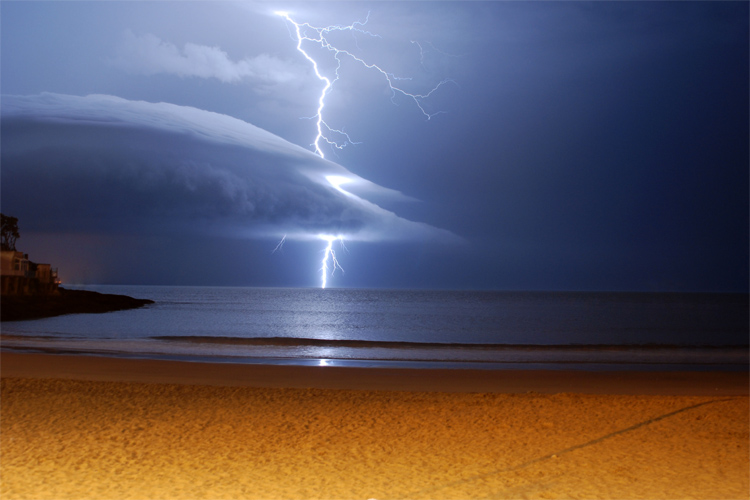Lightning strikes are a real threat to surfers and wave riders in general. The electrostatic discharges between clouds and the Earth can be deadly, but you can dramatically reduce your chances of being hit.
The good news is that only 25 percent of all lightning events worldwide are Cloud to Ground (CG) lightning. Intracloud (IC) or Cloud to Cloud (CC) lightning strikes are more frequent.
The not-so-good news is that, from 2006 through 2021, 444 people were struck and killed by lightning in the United States, and almost two-thirds of the deaths (60 percent) occurred to people who had been enjoying outdoor leisure activities.
Eighty percent are men, and almost 1 in 4 victims are aged 15-24.
Fishing contributed to almost half - 46 percent - of the water-related deaths involving lightning strikes, while boating (power boats, canoes, sailboats, tubes) added another 25 percent.
About 20 percent of the victims were relaxing on a beach, while about 9 percent of the victims had been swimming.
"People who don't alter outdoor plans when thunderstorms are forecast (or occurring) are unnecessarily putting themselves at risk of being struck by lightning," explains John S. Jensenius, Jr., Lightning Safety Specialist at NOAA's National Weather Service.
"Being outdoors any time a thunderstorm is in the area is dangerous. However, some activities cause people to be more vulnerable to a lightning strike, and, in particular, a direct lightning strike."
"Direct strikes are a greater threat to people in open areas such as sports fields or on the water," he adds in his recent study.
Interestingly, summer is the most dangerous season for lightning - 73 percent of deaths occur in June, July, and August.
Read the Clouds
Surfers can avoid lightning-related injury and death. The key is to monitor weather conditions closely and react to any developing threat quickly.
Watch how wind, rain, the ocean, and clouds behave.
The Australian Standard on Lightning Protection is a great tool for those seeking adrenaline, even during thunderstorms.
The 30/30 Rule is designed to provide guidance on the suspension and resumption of activities in an outdoor environment.
It tells us you shouldn't go surfing or get out of the water if you already are when the flash-to-bang count reaches 30 seconds or less.
This number indicates that the actual bolt of lightning causing the sound is just 10 kilometers (or less) away.
In this case, you should only resume your surfing when 30 minutes have passed since the last sighting of lightning.
Lightning Strike | Precautions To Be Taken
- Get out of and away from open water;
- If you are on a surfboard and can't get to shore, crouch down in the middle of the board;
- Get off of and away from motorcycles, scooters, golf carts, and bicycles. Put down golf clubs;
- Get inside a home or inside an all-metal vehicle and keep the windows rolled up;
- Stay a few feet away from open windows, sinks, toilets, tubs, showers, electric boxes, and outlets;
- Avoid using regular telephones, except in an emergency;
- If your skin tingles or your hair stands on end, a lightning strike may be about to occur;
- In large open fields, do not lie flat on the ground. Keep your hands on your knees and lower your head. Get as low as possible without touching your hands or knees to the ground;
- Monitor local weather conditions regularly with an AM/FM radio;
- A person struck by lightning may appear dead, with no pulse or breath, but can be revived with cardiopulmonary resuscitation (CPR). There is no danger to anyone helping a person who has been struck by lightning;
